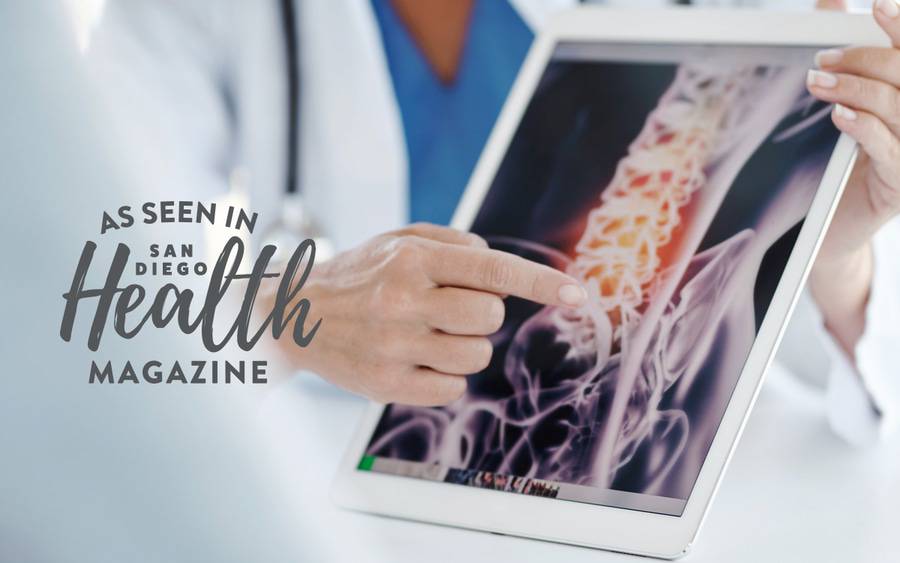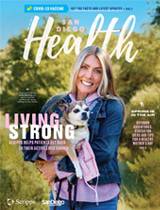5 Ways to Lower Your Osteoporosis Risk
Learn how to protect your bones against fragility and fractures

Learn how to protect your bones against fragility and fractures
When it comes to our overall physical health, if there’s no pain, there’s likely no problem. But Scripps Clinic endocrinologist Matthew Levine, MD, and rheumatologist Megan Lynch, DO, note that sometimes it’s the quieter conditions that both patients and physicians need to look out for.
Often called a silent disease, osteoporosis is mostly found in women 65 and older and men over 70, when the density and quality of their bones have significantly decreased. As those bones become more fragile, the risk of painful hip or pelvic fractures increases, and so does the post-hip-fracture mortality rate.
“Osteoporosis is often underdiagnosed because there is essentially no pain,” Dr. Levine says.
Because there isn’t any pain associated with bone density reduction, it won’t bother you until you break a bone, so patients may not feel that there’s any issue to bring up to their physician until that happens.
How to build stronger bones
As we age, our bone density naturally decreases. But by following a bone-friendly diet, exercising and staying up to date on scans, you can decrease your chances or stabilize your osteoporosis diagnosis. Below are five simple ways to maintain your bone health:
1. Increase your vitamin C and calcium intake
Vitamin C and calcium are integral to protecting your bones. Good sources of calcium include dairy products, dark leafy greens, oranges, beans, seeds and fortified soy milk.
“Patients should have anywhere from 1,000 to 1,200 milligrams of calcium in their daily diet,” says Dr. Levine.
2. Get plenty of vitamin D
Sufficient levels of vitamin D, which helps the body absorb calcium, are also important for protecting the bones. Have your doctor check your vitamin D levels, says Dr. Lynch, who notes that most people are generally low in vitamin D.
3. Find weight-bearing exercises you enjoy
Aim to incorporate some version of weight-bearing or strength-training exercise into your daily or weekly routine.
“Walking, running, hiking, even weight-lifting a few pounds can be very beneficial,” says Dr. Lynch.
4. Don’t skip bone density screenings
A DEXA scan is a noninvasive test that looks at a patient’s bone density. Dr. Lynch and Dr. Levine suggest women get their bone density screenings starting at age 65, and men at age 70.
5. Get the facts about bone health
Osteoporosis is not just a women’s disease. For example, the risk of osteoporosis is higher in people who are white or Asian, have a family history of osteoporosis, have a small body frame, have certain hormone imbalances or medical conditions, or have had weight-loss surgery.
“Older women certainly are at risk, but many fractures happen in men as well,” Dr. Levine says. “It’s key that both get appropriate bone density scanning.”

This content appeared in San Diego Health, a publication in partnership between Scripps and San Diego Magazine that celebrates the healthy spirit of San Diego.